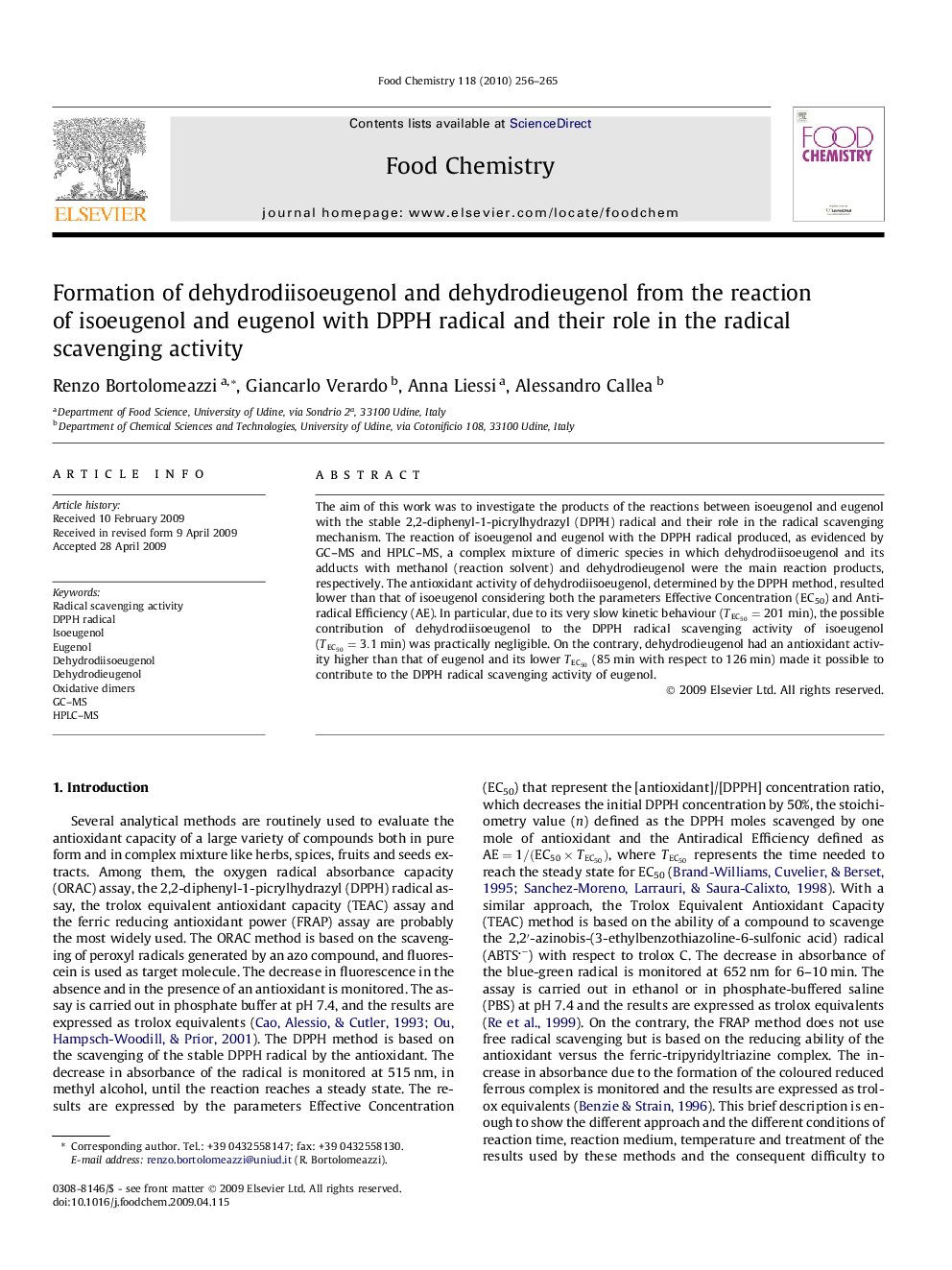| Article ID | Journal | Published Year | Pages | File Type |
|---|---|---|---|---|
| 1186918 | Food Chemistry | 2010 | 10 Pages |
The aim of this work was to investigate the products of the reactions between isoeugenol and eugenol with the stable 2,2-diphenyl-1-picrylhydrazyl (DPPH) radical and their role in the radical scavenging mechanism. The reaction of isoeugenol and eugenol with the DPPH radical produced, as evidenced by GC–MS and HPLC–MS, a complex mixture of dimeric species in which dehydrodiisoeugenol and its adducts with methanol (reaction solvent) and dehydrodieugenol were the main reaction products, respectively. The antioxidant activity of dehydrodiisoeugenol, determined by the DPPH method, resulted lower than that of isoeugenol considering both the parameters Effective Concentration (EC50) and Antiradical Efficiency (AE). In particular, due to its very slow kinetic behaviour (TEC50=201min), the possible contribution of dehydrodiisoeugenol to the DPPH radical scavenging activity of isoeugenol (TEC50=3.1min) was practically negligible. On the contrary, dehydrodieugenol had an antioxidant activity higher than that of eugenol and its lower TEC50TEC50 (85 min with respect to 126 min) made it possible to contribute to the DPPH radical scavenging activity of eugenol.
